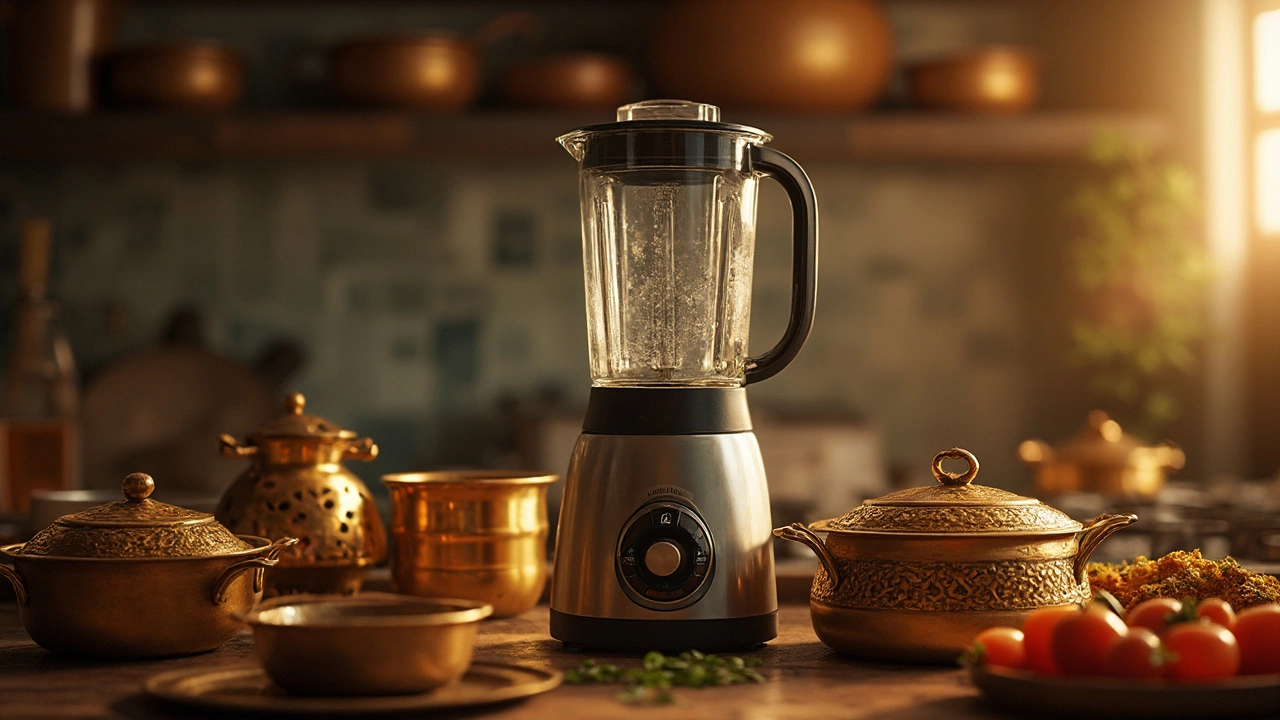Have you ever found yourself tangled up trying to figure out if a blender is a part of your kitchenware collection or an appliance? It's easy to get confused. But here's the thing: kitchenware and kitchen appliances are quite different once you break them down.
Kitchenware is all the stuff you use to whip up that delicious meal—a colorful array of pots, pans, knives, and spatulas. These aren't plugged in, except maybe your trusty kettle if it's not cast iron or stainless steel. They're all about the manual side of cooking. You're hands-on, tossing and turning ingredients, feeling more like a chef with every stir.
Defining Kitchenware
Alright, let's clear up what kitchenware really means. When we talk about kitchenware, we're looking at all those handy tools you use to prepare meals. Think pots, pans, knives, cutting boards, and those trusty spatulas. Essentially, if it helps you chop, mix, and cook without needing a plug, it's probably kitchenware.
Famous chef Julia Child once said,
"The only time to eat diet food is while you're waiting for the steak to cook."It's a cheeky reminder of how kitchenware plays a critical role in preparing delicious meals, allowing you to focus on the joy of cooking rather than just the technique.
Different Types of Kitchenware
There are all sorts of gear you might have in your kitchen. Here's a quick rundown:
- Cookware: These include your saucepans, frying pans, and stockpots. They often make the difference when it comes to heat distribution and controlling cooking temps.
- Bakeware: This covers baking sheets, pie dishes, and muffin tins. Your go-to if you're baking cookies or a classic apple pie.
- Cutlery: We're talking about knives, not your everyday fork-and-spoon set. A solid chef's knife is worth its weight in gold for prep work.
- Utensils: Think ladles, tongs, and whisks. These tools manage and manipulate the food while cooking.
Materials Matter
What your kitchenware is made of can change how you cook. Here's the gist of it:
| Material | Benefits |
|---|---|
| Stainless Steel | Durable, easy to clean, and holds heat well. |
| Cast Iron | Great for even heat distribution, perfect for high-heat cooking. |
| Non-stick | Prevents food from sticking, making for easy turning and cleanup. |
So, the next time you're tearing up your kitchen looking for the right tool, remember knowing your kitchenware can make or break a dish. It's all about having the right equipment tailored to your cooking style and needs.
Exploring Kitchen Appliances
When we talk about kitchen appliances, we're diving into the realm of electric wonders in your culinary world. These are your hardworking gadgets, those trusty machines that help transform ingredients into delicious meals with the mere push of a button.
The Must-Haves
Some electric companions find their way into almost every home, thanks to their practicality and convenience. Think about your trusty microwave or the refrigerator humming quietly in the corner, keeping your groceries fresh. Then there's the oven, a true staple for everything from baking cakes to roasting chickens. Each appliance plays a specific role, making life just a bit easier.
Specialty Gadgets
Depending on what you love to cook, the world of kitchen appliances goes way beyond the basics. For instance, coffee enthusiasts might invest in high-quality espresso machines or grinders for that perfect morning brew. Home bakers might swear by their stand mixers, which take care of kneading dough or whipping up a batch of cookies.
Why Power Consumption Matters
It's good to remember that kitchen appliances can be power-hungry, with some such as ovens and refrigerators being amongst the top consumers. Thinking eco-friendly? Look for the energy rating label—A++ usually means it's kinder to the environment. Not only is it better for the world, but it can keep your electricity bills in check.
Smart Technology
In 2025, smart technology in kitchen appliances is all the rage. Imagine controlling your oven's temperature with a swipe on your phone or receiving notifications when your dishwasher cycle is over. While not mandatory, these smart devices can save time and add a level of convenience we crave.
When picking the right appliances, consider factors like space, budget, and your specific cooking needs. After all, these gadgets should simplify your culinary adventures, not complicate them!

Key Differences
When it comes to kitchenware and kitchen appliances, the easiest way to distinguish them is by their usage and functionality in your kitchen. Let's break it down a bit further.
Kitchenware: The Essentials
These are your hands-on tools. Think of items like cutting boards, chef's knives, and baking trays. They don't have a plug, nor do they require electricity. Instead, they rely solely on your culinary skills and muscle power. You can also say they're the foundation of every meal prep.
Kitchen Appliances: The Power Players
On the flip side, kitchen appliances like microwaves, refrigerators, and mixers require electricity to function. They're your real allies when it comes to saving time and energy. They're perfect for those busy days when you need your cooking done faster or more efficiently.
One easy way to remember the difference: kitchen appliances often automate or expedite a cooking task, while kitchenware equips you to do it manually.
Impact on Kitchen Space
Considering your kitchen space is crucial. Kitchenware tends to be more flexible in terms of storage, fitting into drawers or hooks. Meanwhile, kitchen appliances can be bulky and take up countertop space, requiring careful planning.
Aiming for both space and efficiency? A 2023 study from the Culinary Institute of America found that kitchens using a balanced mix of efficient appliances and versatile kitchenware saw a 30% increase in cooking efficiency and a 15% reduction in food prep time!
Practical Tips for the Kitchen
Organizing your kitchen can make cooking not just efficient, but downright enjoyable. When you understand the roles of kitchenware and kitchen appliances, you can set up your space optimally. Here are some practical tips to get the best out of your culinary gadgets and gear.
Group Similar Items Together
Having your kitchenware and appliances grouped by function makes life easier. Store cookware like pots and pans together, while appliances that you use frequently, such as blenders and toasters, should be easily accessible on your countertop or a designated cabinet. This way, you know exactly where everything is when you're in the cooking groove.
Utilize Vertical Space
Small kitchen? No problem. Use wall-mounted racks for pots and pans to free up cupboard space. Shelving units can also house small appliances when you run out of room. Consider hanging those awkward to store utensils like spatulas and ladles on wall hooks. It's all about maximizing what you have.
Invest in Multi-Use Tools
If your kitchen space is tight, consider getting multi-functional kitchen appliances. An instant pot, for instance, can pressure cook, slow cook, and even sauté, saving both space and money.
Regular Maintenance is Key
Both kitchenware and appliances benefit from regular maintenance. Keeping knives sharpened means safer and more efficient chopping. Appliances should be cleaned and checked regularly to ensure they work optimally—there's nothing worse than reaching for your food processor only to find it's gone bust!
Label and Categorize Food Storage
While not strictly about the hardware, managing how you store ingredients can accelerate your cooking process. Label jars and containers to avoid the perpetual guessing game of 'is that flour or powdered sugar?' This little step saves time and keeps your kitchenware and appliances running smoothly since you won't be over-adding or substituting ingredients by mistake.
